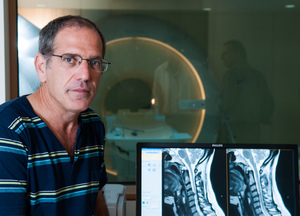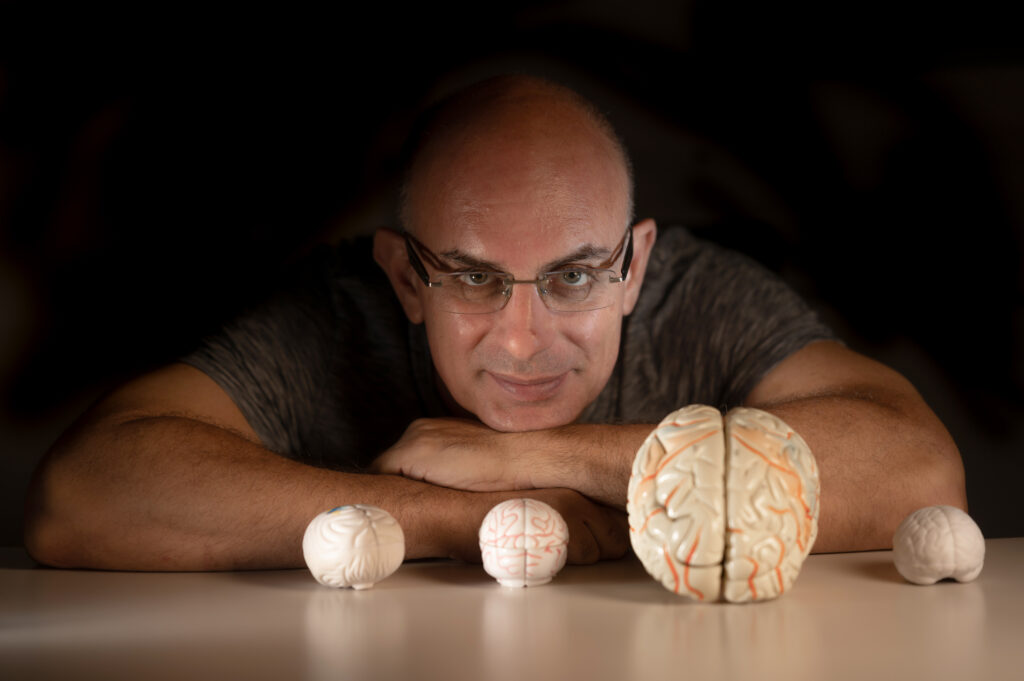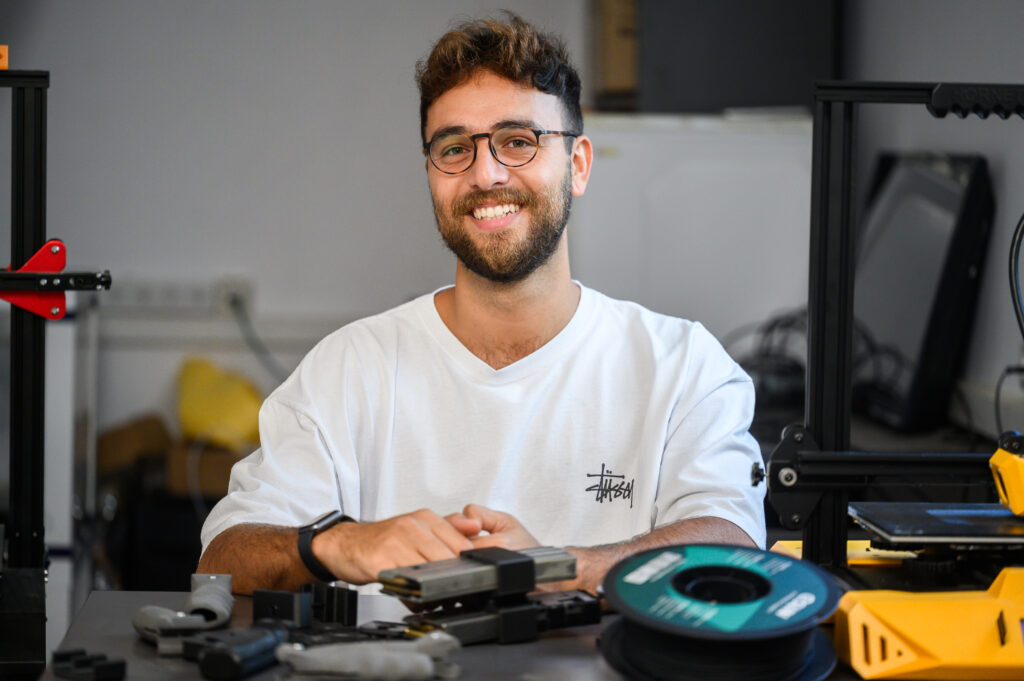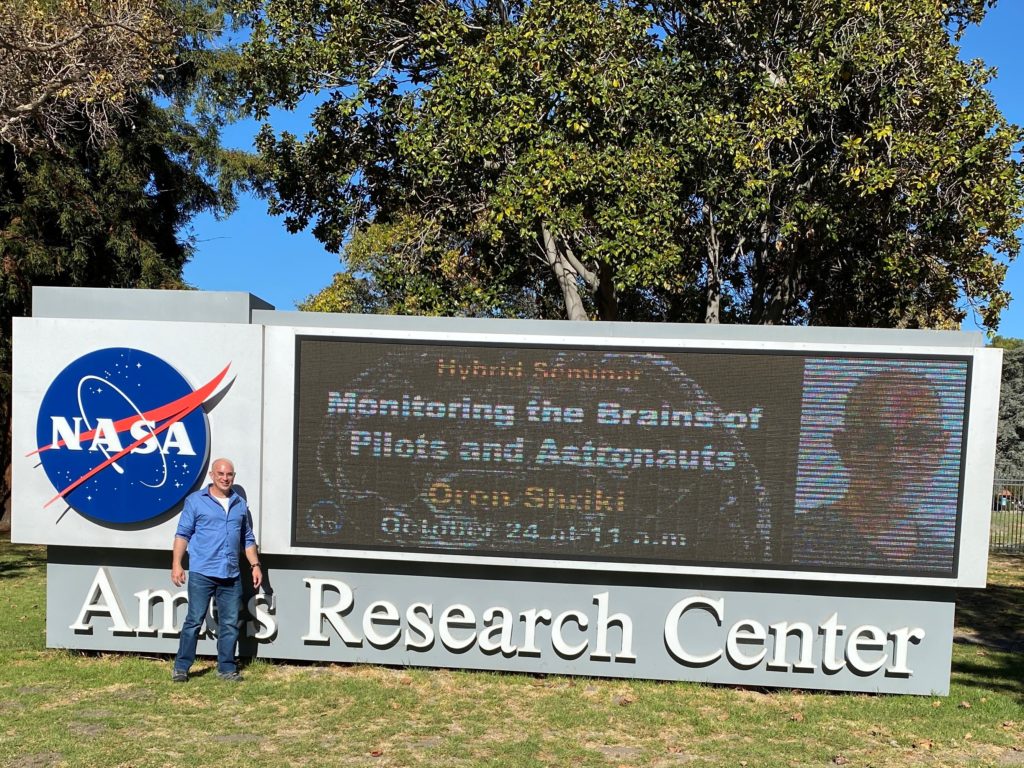
Discovered Biomarker Predicts Post-Injury Epilepsy
Discovered Biomarker Predicts Post-Injury Epilepsy
December 21, 2017
Medical Research, Press Releases
Ben-Gurion University of the Negev (BGU) researchers have discovered a promising biomarker for predicting and potentially preventing epileptic seizures in patients with brain injuries, using EEG (electroencephalographic) recordings of theta brain waves.
Their findings, published in The Journal of Neuroscience, demonstrate how using EEGs to identify changes in brain wave patterns over time can predict which post-injury patients will develop epilepsy. A neurological disorder that disturbs nerve cell activity in the brain, epilepsy causes seizures during which people experience uncontrolled shaking and movement or loss of consciousness.

Prof. Alon Friedman, M.D., Ph.D
“Post-injury epilepsy (PIE) is a devastating, unpreventable consequence of traumatic brain injury (TBI) and stroke, which develops in 10 to 40 percent of survivors months, or even years, later,” says BGU Prof. Alon Friedman, M.D., Ph.D., a neurosurgeon and researcher in BGU’s Brain Imaging Research Center and the Zlotowski Center for Neuroscience.
The Epilepsy Foundation estimates more than two million people in the United States have, or have had, some form of epilepsy; many do not respond to medication. In addition to suffering from unpredictable, often difficult to control seizures, patients with PIE are also prone to neuropsychiatric conditions such as cognitive decline and depression.
“While news of promising drugs likely to prevent the onset of epilepsy has emanated from scientific research, we need to first detect reliable biomarkers in the brain that predict which patients will develop the disease,” says Prof. Friedman.
Through their research, the BGU team discovered that theta waves, measured as part of an EEG, can predict five different types of post-injury epilepsy in mice and rats. Theta waves generate the rhythmic, neural oscillatory pattern in EEG signals, recorded either from inside the brain or from electrodes glued to the scalp.
By tracking continuous recordings, from time of injury through the onset of spontaneous seizures, BGU researchers discovered a specific pattern of theta activity decline over time as signs of epilepsy development. This pattern also seems to be associated with disturbances in sleep-awake cycles.
“These findings hold great promise for expediting targeted clinical investigations of EEG dynamics in human patients, which could lead to new approaches for predicting, and eventually treating, epilepsy as well as other neuropsychiatric complications that develop after brain injuries,” says lead study author Dan Z. Milikovsky, an M.D.-Ph.D. student at the BGU Zlotowski Center for Neuroscience.
The research team also included Itai Weissberg, Lyn Kamintsky, Osnat Schefenbauer, Liron Sheintuch, Daniel Zelig, and Jonathan Ofer of the BGU Zlotowski Center for Neuroscience; Kristina Lippman of the Institute of Neurophysiology, Charité-University of Medicine Berlin; and Federica Frigerio and Annamaria Vezzani from the Department of Neuroscience, Experimental Neurology, IRCCS-Istituto di Ricerche Farmacologiche Mario Negri in Milan, Italy.
The study was supported by the European Union Seventh Framework Programme (Epitarget), the Binational Israel-USA Foundation, The German Research Foundation, the Nova Scotia Health Research Foundation, and the Canada Foundation for Innovation.
ABOUT AMERICANS FOR BEN-GURION UNIVERSITY
By supporting a world-class academic institution that not only nurtures the Negev, but also shares its expertise locally and globally, Americans for Ben-Gurion University engages a community of Americans who are committed to improving the world. David Ben-Gurion envisioned that Israel’s future would be forged in the Negev. The cutting-edge research carried out at Ben-Gurion University drives that vision by sustaining a desert Silicon Valley, with the “Stanford of the Negev” at its center. The Americans for Ben-Gurion University movement supports a 21st century unifying vision for Israel by rallying around BGU’s remarkable work and role as an apolitical beacon of light in the Negev desert.
About Ben-Gurion University of the Negev
Ben-Gurion University of the Negev embraces the endless potential we have as individuals and as a commonality to adapt and to thrive in changing environments. Inspired by our location in the desert, we aim to discover, to create, and to develop solutions to dynamic challenges, to pose questions that have yet to be asked, and to push beyond the boundaries of the commonly accepted and possible.
We are proud to be a central force for inclusion, diversity and innovation in Israel, and we strive to extend the Negev’s potential and our entrepreneurial spirit throughout the world. For example, the multi-disciplinary School for Sustainability and Climate Change at BGU leverages over 50 years of expertise on living and thriving in the desert into scalable solutions for people everywhere.
BGU at a glance:
20,000 students | 800 senior faculty | 3 campuses | 6 faculties: humanities & social sciences, health sciences, engineering sciences, natural sciences, business & management, and desert research.
For all press inquiries, please contact:
James Fattal, J Cubed Communications
516.289.1496



